Christine M. Jewell
TEACHER'S SNAPSHOT
Topics:
Art, Colonial History, Early Republic, Food, Transportation
Town:
Clinton, Hartford, Killingworth, Meriden, Middletown, Tolland
Historical Background
From the early colonial period until the mid-1800s, taverns, also called “ordinaries,” served the needs of the community as a place for gathering and for travelers. Taverns were an important part of the town, which also often included a town green, meetinghouse, courthouse, and jail in its center. The tavern was a central place for mail to be delivered via stagecoach or post rider. It was the place for the men to get a newspaper, almanac, or printed pamphlets, view neighborhood ads or postings, and to gather and discuss the news or gossip of the town. Travel was very difficult in colonial times, however. The roads were treacherous and it took a very long time to travel short distances. It was also expensive, often requiring overnight stays. Most people who traveled were men conducting business, lawyers, or merchants. Women traveled less often, usually to visit family or settle family business, and usually traveled with a chaperone. Taverns offered food and drink, a place to sleep, and shelter for horses. Not everyone was allowed in a tavern, however. Between 1690 and 1730, “Black Codes” limited the rights of African Americans and Native Americans (including those who were free). In 1709, Connecticut restricted the gathering of enslaved people, servants, or young people on specified days. In colonial times, when women were expected to marry, have children, and take care of the household, tavern-keeping was one of the few professions open to women (sometimes following the death of her husband).
D1: Potential Compelling Question
D1: POTENTIAL SUPPORTING QUESTIONS
- What was travel like in the late 1800s and early 1900s in Connecticut?
- Why was it important for every town to have at least one tavern?
- How were taverns similar to, or different from, today’s hotels and restaurants?
D2: TOOL KIT
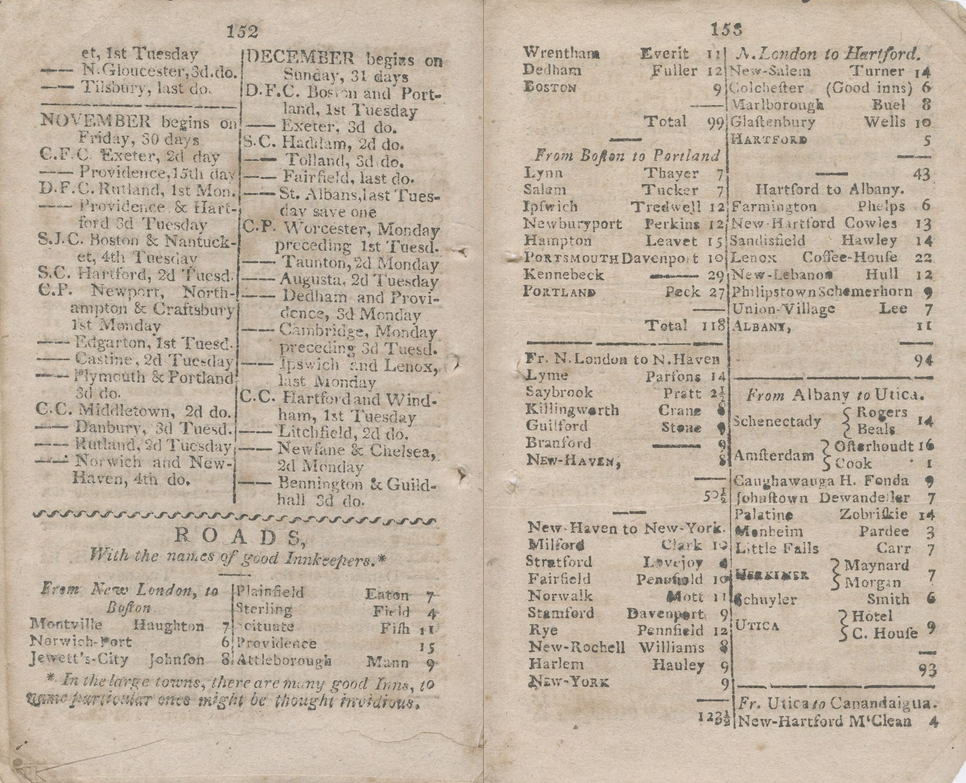
“Roads, With the names of good Innkeepers.” The Connecticut Register, 1811, pages 152–155. Samuel Green, New London. Connecticut State Library. Online at the Connecticut Digital Archive.
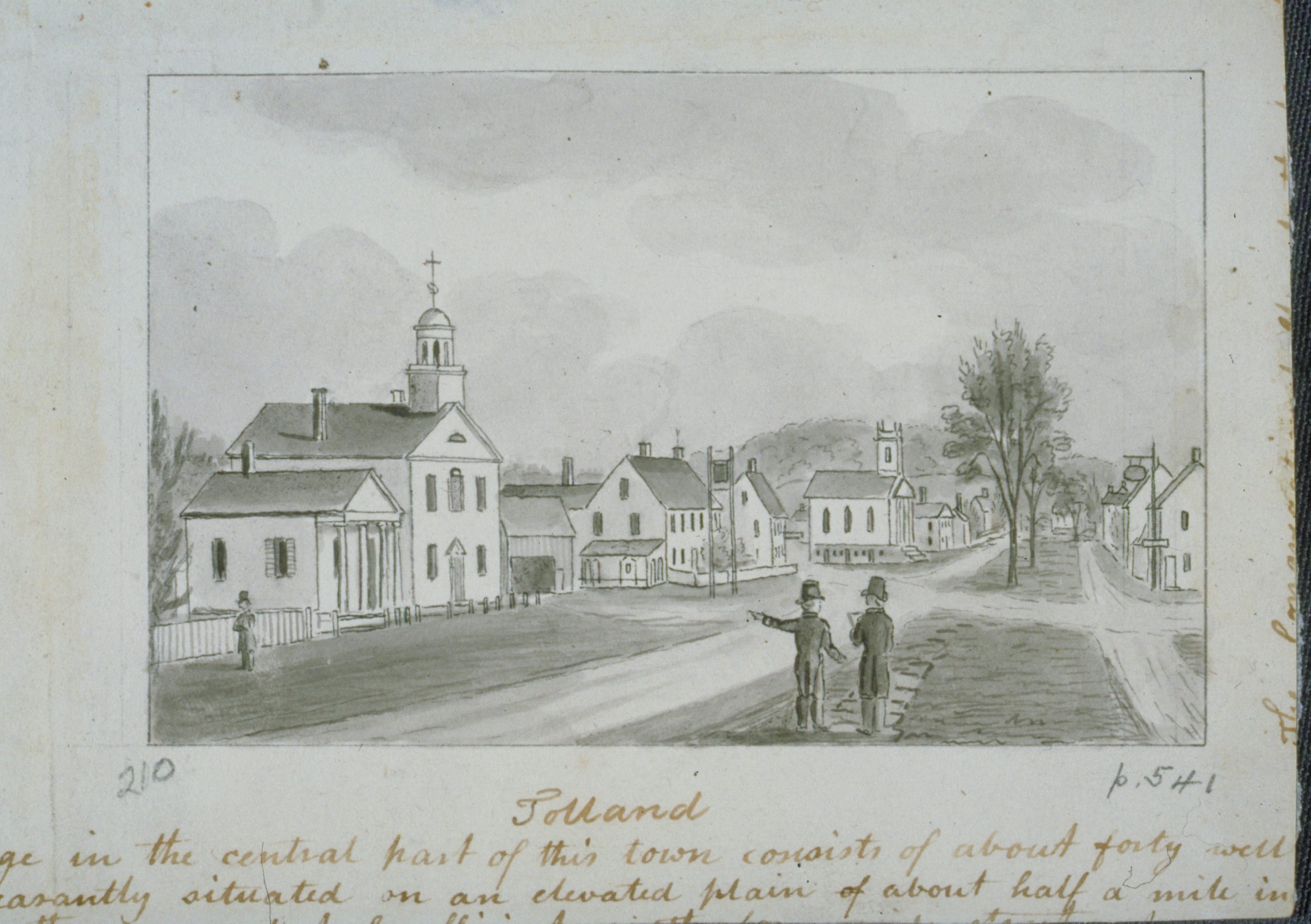
Tolland, preliminary drawing for Connecticut Historical Collections by John Warner Barber. New Haven, 1836. Connecticut Museum of Culture and History. Online at the Connecticut Digital Archive.
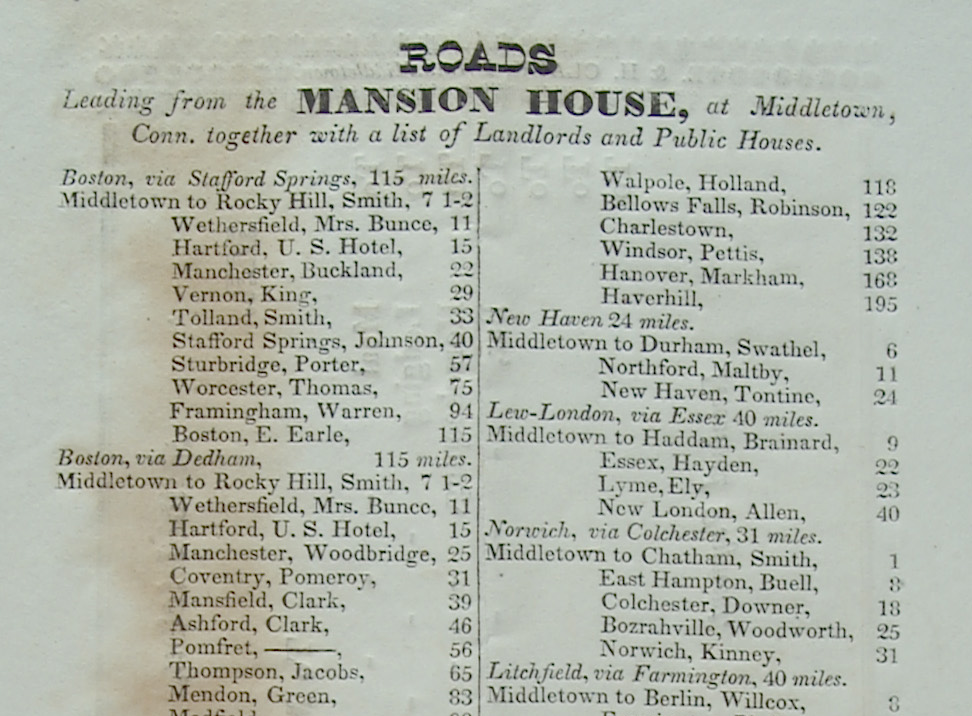
“Roads leading from the Mansion House, at Middletown, Conn. together with a list of landlords and public houses…” Printed by E.W. Newton, Middletown, CT, June 1828. Connecticut Museum of Culture and History. Online at the Connecticut Digital Archive.
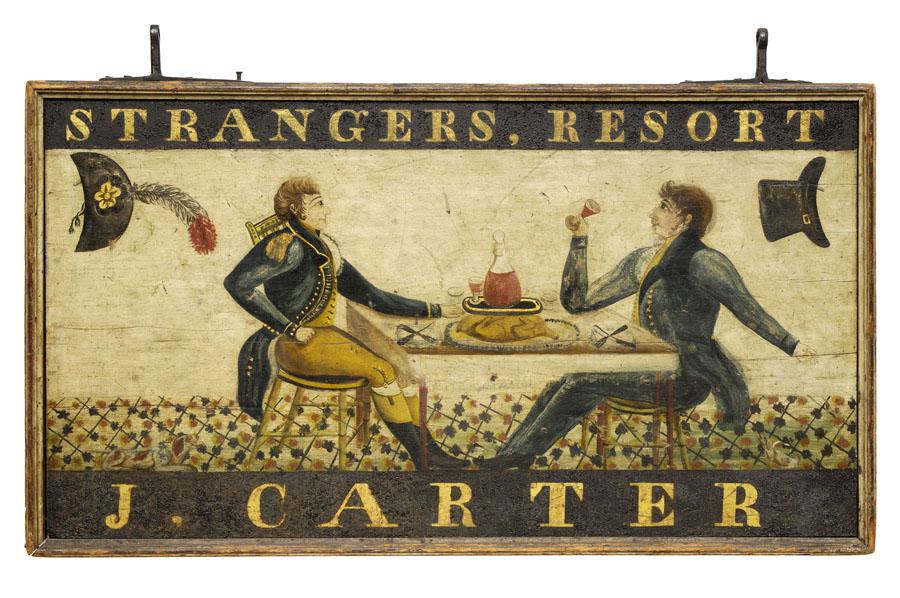
Sign for Carter’s Inn, 1823. Connecticut Museum of Culture and History.
Note that the sign has different images on each side.
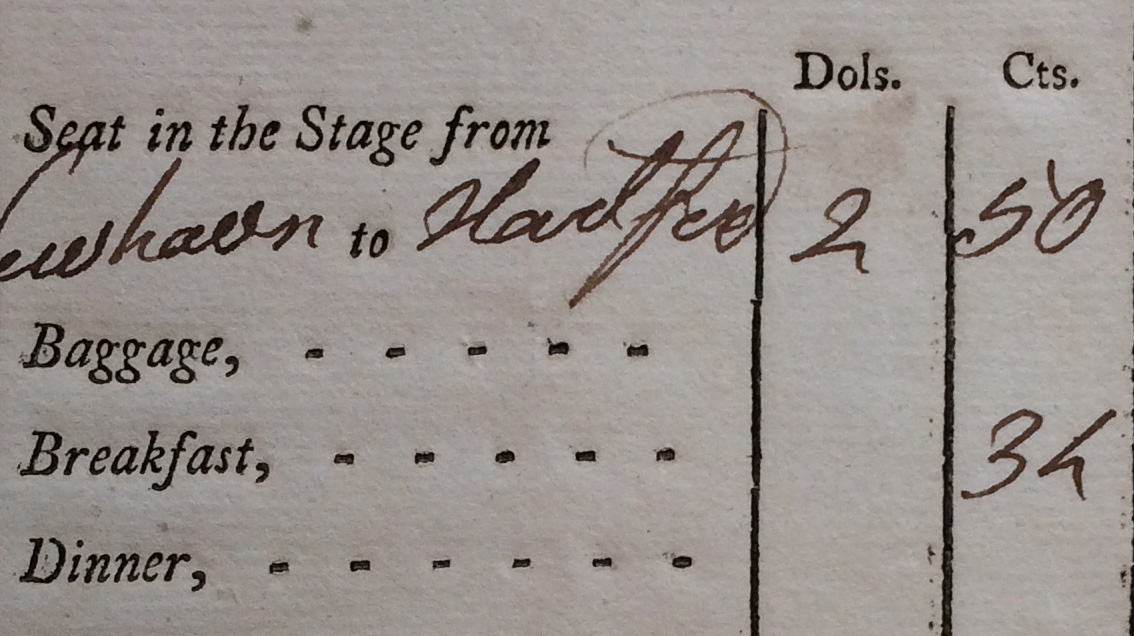
Tavern bill. Insign Hough, Meriden, early 1800s. Connecticut Museum of Culture and History.
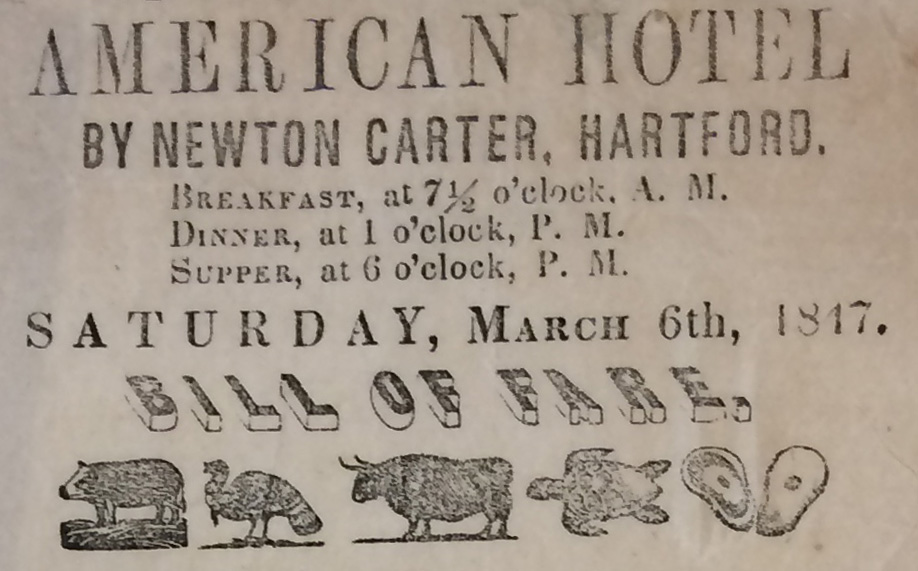
Tavern menu with train and stage schedule. American Hotel, Hartford, early 1800s. Connecticut Museum of Culture and History.

Library of Congress Primary Source Analysis Tool
D3: INQUIRY ACTIVITY
Working together as a class or in small groups or pairs, students will examine the documents and images in the toolkit and conduct a primary source analysis of each. You may wish to use the Library of Congress Primary Source Analysis worksheet to help guide the inquiry. If students are working in pairs or small groups with just some of the sources, they will share out their finding with the rest of the class before starting the more general discussion.
What purpose did taverns serve?
Who used taverns?
Where were taverns located?
What was travel like in the late 1800s and early 1900s in Connecticut?
How were taverns similar to, or different from, today’s hotels and restaurants?
What can the students infer about the role of taverns in people’s lives at the time?
D4: COMMUNICATING CONCLUSIONS
- Students will research historic taverns or inns in their town or surrounding communities. They will then compare and contrast their findings with information about any hotels, inns, or community gathering spots available today in the same town and present their findings in a poster or digital presentation
- Students will create their own tavern sign. What type of tavern would they operate? Does it sell food, offer lodgings, and/or host meetings and dances? What type of animal or object would represent their tavern? What is the name of the tavern? Students can see additional examples of early tavern signs from the Connecticut Museum of Culture and History’s online collection.
ADDITIONAL RESOURCES
Place to GO
Keeler Tavern Museum, Ridgefield
Sun Tavern, Fairfield
Phelps Tavern, Simsbury
Squires Tavern, Barkhamsted
Things To DO
Try out the A March for Liberty videos and activity book.
Explore the Connecticut Inns & Tavern Signs virtual exhibit from the Connecticut Museum of Culture and History.
Do a deep dive into a work of art featuring a tavern with SEE/change: Seven Miles to Farmington from the Florence Griswold Museum.
Websites to VISIT
Articles to READ
“Taverns of Colonial Farmington” by Alex Tremblay
ConnecticutHistory.org:
- “Tavern Signs Mark Changes in Travel, Innkeeping, and Artistic Practice” by Susan P. Schoelwer
- “The Living Actually Haunted Many Connecticut Taverns – Who Knew?”
- “Stagecoach Sustained Commerce and Communication in 1800s” by Richard DeLuca
- “Sarah Kemble Knight’s Journey through Colonial Connecticut” by Richard DeLuca
- “George Washington Slept Here (Just Perhaps Not Well)”
- “A Sign of the Times Blends Masonic and Patriotic Imagery” by Richard Malley for Your Public Media



